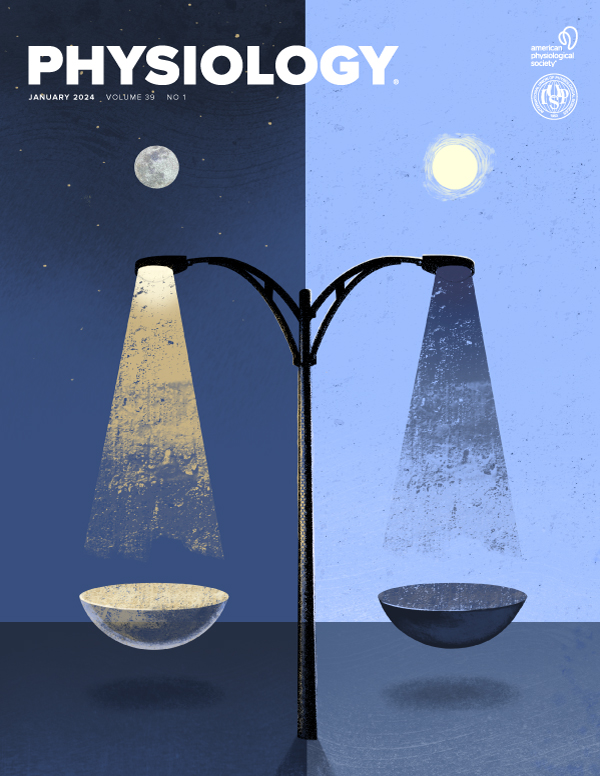PTSD induced inflammation negatively impacts cardiac homeostasis
IF 5.3
2区 医学
Q1 PHYSIOLOGY
引用次数: 0
Abstract
Multiple studies indicate that post-traumatic stress disorder (PTSD) is a risk factor for cardiovascular disease (CVD), however the mechanisms behind this correlation is unknown. We hypothesize that PTSD stimulates recruitment of monocyte-derived macrophages to the heart, resulting in increased cardiac fibrosis and resetting cardiac homeostasis. To induce experimental PTSD, male C57BL/6 mice were given 5 different foot-shocks (IFS; 1.0 mA, 1 sec duration) in 6 min. Before each shock, a tone was played to act as the PTSD-associated trigger. Control mice were also placed in the IFS chambers for 6 min but did not receive foot shocks. Behavioral testing was performed to characterize mice into non-responders (NR; IFS mice that do not demonstrate PTSD-like behavioral characteristics) and PTSD-like mice. Terminal timepoints selected were 4-weeks (4.6±0.7 months old) and 13-weeks (8.2±0.0 months old) post-IFS. Doppler echocardiography was collected at the 4-week time point. Histological and immunoblot assessments were collected at 13-weeks post-IFS to determine chronic alterations in cardiac homeostasis. Doppler measurements revealed that 4-weeks post-IFS, PTSD-like mice had decreased aortic ejection time (p<0.05) and trended toward increased isovolumetric relaxation (p=0.080) and contraction (p=0.088) time compared to controls. Interestingly at 13-weeks post-IFS, cardiomyocyte size was also elevated in PTSD-like mice compared to controls (p<0.05), suggesting the functional changes observed at 4-weeks reflect elevations in myocardial stress. A decrease in spleen weight at 4- (p<0.05) but not at 13-weeks (p=0.30) post-IFS indicate potential recruitment of immune cells acutely in PTSD-like mice. In line with spleen weights, at 4- and 13-weeks post-IFS, macrophage staining showed elevated levels in the LV of PTSD-like mice but not NR compared to controls (p<0.05 for all). In addition, matrix metalloproteinase (MMP)-9 protein levels were increased in the LV of PTSD-like mice compared to controls 13-weeks post-IFS (p<0.05). Collagen volume fraction was elevated at 13-weeks post-IFS in PTSD-like and NR mice compared to controls (p<0.05 for all). Our data indicates PTSD-induced cardiac stress is leading to macrophage recruitment and cardiac fibrosis which likely over time will lead to deterioration of myocardial function. This work was supported by the National Institutes of Health T32GM123055; the American Heart Association Innovator Project IPA35260039; the Biomedical Laboratory Research and Development Service of the Veterans Affairs Office of Research and Development Award IK2BX003922; and South Carolina Translational Research Center UL1TR001450 This is the full abstract presented at the American Physiology Summit 2023 meeting and is only available in HTML format. There are no additional versions or additional content available for this abstract. Physiology was not involved in the peer review process.创伤后应激障碍引起的炎症对心脏稳态产生负面影响
多项研究表明,创伤后应激障碍(PTSD)是心血管疾病(CVD)的危险因素,但这种相关性背后的机制尚不清楚。我们假设创伤后应激障碍刺激单核细胞来源的巨噬细胞向心脏募集,导致心脏纤维化增加和心脏稳态重置。为了诱导实验性创伤后应激障碍,雄性C57BL/6小鼠给予5种不同的足部电击(IFS;在每次电击之前,播放一个音调作为ptsd相关的触发器。对照小鼠也被放置在IFS室中6分钟,但不接受足部电击。通过行为测试将小鼠分为无反应小鼠(NR;不表现出ptsd样行为特征的IFS小鼠和ptsd样小鼠。选择的终止时间点为ifs后4周(4.6±0.7个月)和13周(8.2±0.0个月)。在第4周时间点采集多普勒超声心动图。在ifs后13周收集组织学和免疫印迹评估,以确定心脏稳态的慢性改变。多普勒测量显示,与对照组相比,ifs后4周,ptsd样小鼠的主动脉射血时间缩短(p<0.05),等容松弛(p=0.080)和收缩(p=0.088)时间增加。有趣的是,在ifs后13周,与对照组相比,ptsd样小鼠的心肌细胞大小也有所增加(p<0.05),这表明第4周观察到的功能变化反映了心肌应激的升高。ifs后4周脾脏重量下降(p<0.05),但13周没有下降(p=0.30),这表明ptsd样小鼠可能会急性募集免疫细胞。与脾脏重量一致,在ifs后4周和13周,巨噬细胞染色显示ptsd样小鼠的LV水平升高,但NR与对照组相比没有升高(p<0.05)。此外,ptsd样小鼠左室中基质金属蛋白酶(MMP)-9蛋白水平在ifs后13周较对照组升高(p<0.05)。与对照组相比,ptsd样小鼠和NR小鼠在ifs后13周胶原体积分数升高(p<0.05)。我们的数据表明,创伤后应激引起的心脏应激导致巨噬细胞募集和心脏纤维化,随着时间的推移,可能会导致心肌功能恶化。本工作由美国国立卫生研究院T32GM123055支持;美国心脏协会创新项目IPA35260039;退伍军人事务办公室生物医学实验室研发服务处研究开发奖IK2BX003922;这是在2023年美国生理学峰会会议上发表的全文摘要,仅以HTML格式提供。此摘要没有附加版本或附加内容。生理学没有参与同行评议过程。
本文章由计算机程序翻译,如有差异,请以英文原文为准。
求助全文
约1分钟内获得全文
求助全文
来源期刊

Physiology
医学-生理学
CiteScore
14.50
自引率
0.00%
发文量
37
期刊介绍:
Physiology journal features meticulously crafted review articles penned by esteemed leaders in their respective fields. These articles undergo rigorous peer review and showcase the forefront of cutting-edge advances across various domains of physiology. Our Editorial Board, comprised of distinguished leaders in the broad spectrum of physiology, convenes annually to deliberate and recommend pioneering topics for review articles, as well as select the most suitable scientists to author these articles. Join us in exploring the forefront of physiological research and innovation.
 求助内容:
求助内容: 应助结果提醒方式:
应助结果提醒方式:


